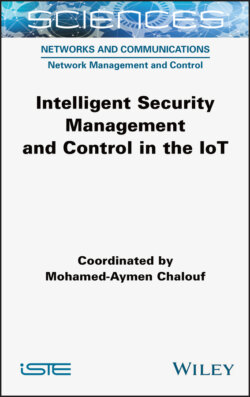Читать книгу Intelligent Security Management and Control in the IoT - Mohamed-Aymen Chalouf - Страница 26
1.4.2.1. Stage 1: selecting available access networks/CR channels
ОглавлениеIn the M-RAN context, this processing stage is very simple. In fact, each access network detected is available. However, in a CRN context, this stage requires the following processing. First of all, it involves checking the availability of the current channel k and determining the probability Pr(Ck (t) = 0) that the channel k will be inactive at instant t. The secondary user should switch to a new channel when the availability of the current channel is lower than the probability threshold (equation [1.5]):
[1.5]
where Ck (t) represents the current channel k, which is a binary random variable with the values 0 and 1 representing the inactive and the occupied states, respectively.
τL is the probability threshold below which a channel is considered occupied and the secondary user should be allocated a spectrum handoff (Song and Xie 2012), that is, the current channel is no longer considered inactive at the end of transmission from the frame.
Then, for each channel i detected, it remains to determine the probability of inactivity and the average availability of the channel for the next period.
The candidate channel i is considered inactive for the next period when Pr (Ci(t) = 0) ≥ τH, where τH is the probability threshold for a channel to be considered inactive at the end of the current frame (Song and Xie 2012). Thus, the preselected channels are those that have a probability and an average duration of availability higher than a threshold tiOFF represents the duration of the OFF period of the channel i.
To support at least one SU frame, the probability that the activity duration of the ith channel will be longer than one transmission time of the frame η should be higher than or equal to θ. θ is the probability threshold for a channel to be considered inactive for the next frame transmission (Song and Xie 2012).
Thresholds τL and τH are not fixed arbitrarily. The choice of these thresholds can have an impact on the number of channels filtered during this stage. For this, we will choose both these thresholds depending on the radio context, again, such as the noise that characterizes this environment or the inactivity of primary users. For example, when there are very few channels considered available, we can lower the value of τL = τH. On the contrary, if these channels are very numerous, the value of τL = τH will be increased further. This will make it possible not only to select the channels with a high probability of availability, but also to reduce the number of candidates for which the decision-making module should run the remainder of the processing (calculation of different scores and decisions). Thus, making the right choice from among these thresholds will directly impact the efficiency of the approach retained as well as its global cost (CPU, memory, energy, etc.). We note that in some cases, τL could be different from τH.
